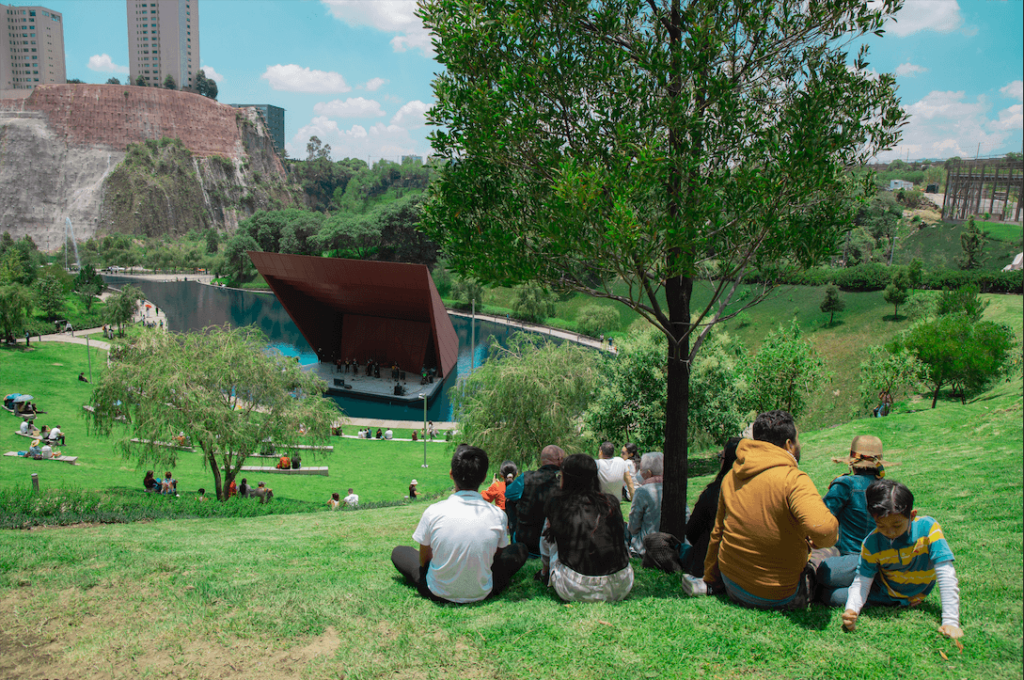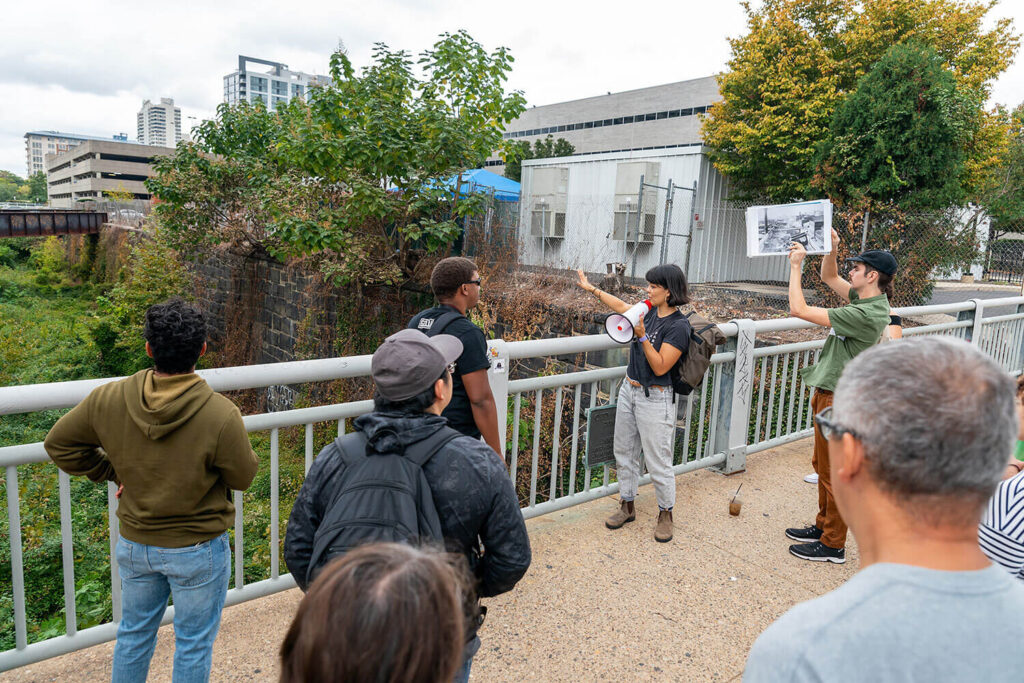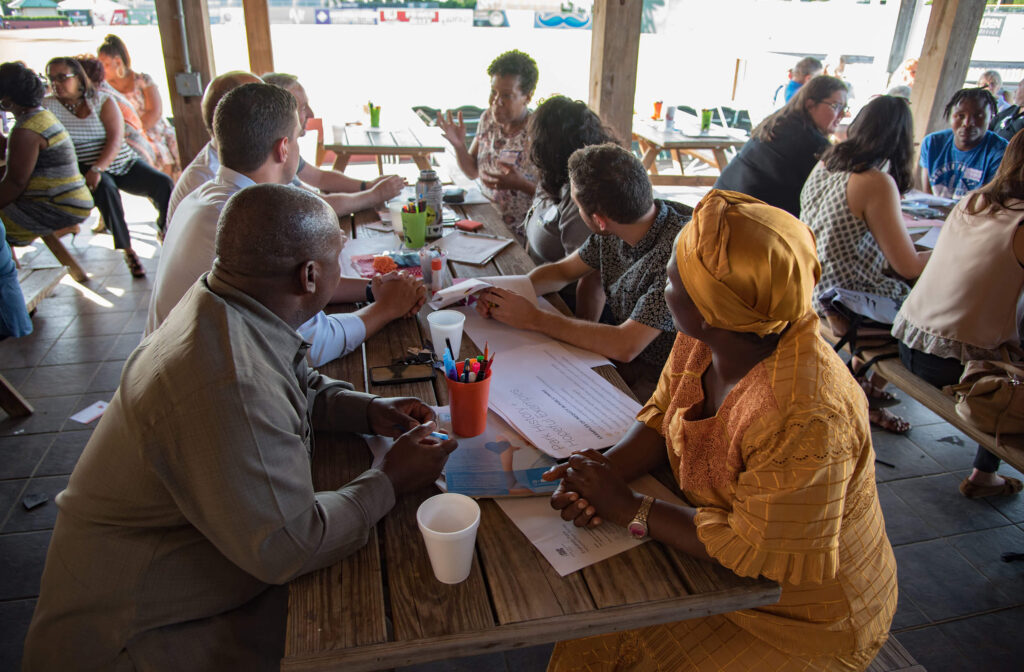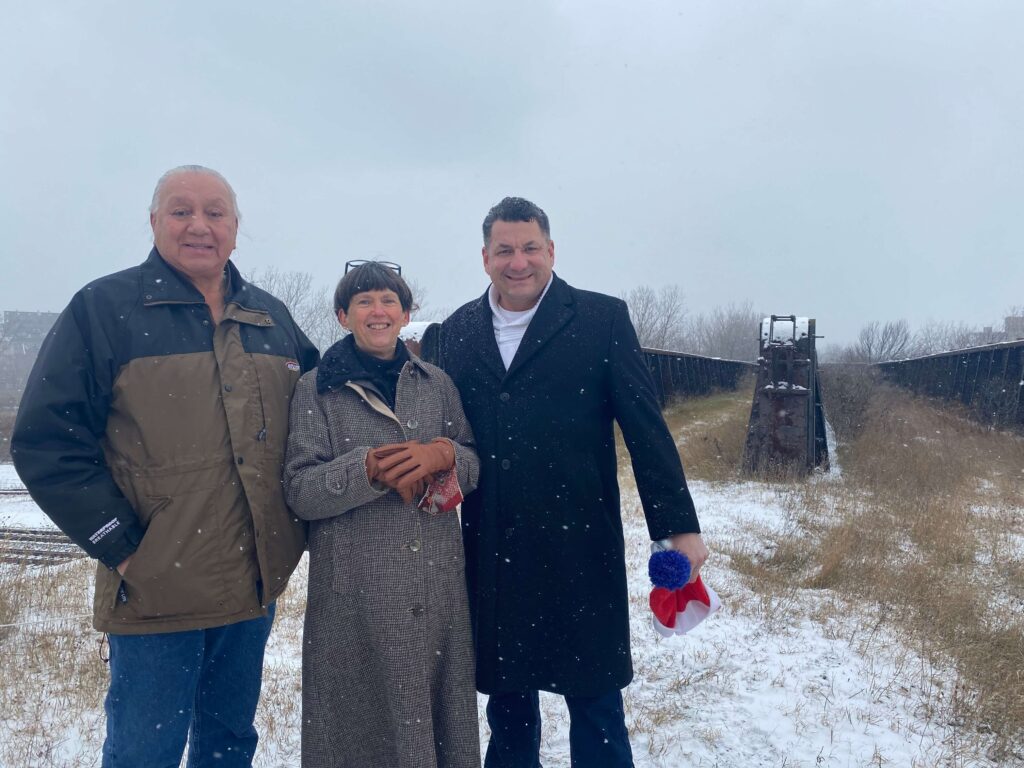Would you like to showcase your own work to embed equity in your infrastructure reuse project?
Visitor-Informed Safety and Hiring Practices

Friends and family enjoying the park slopes of La Mexicana. Credit: La Mexicana
La Mexicana is a 70-acre green space in Mexico City. After the 1985 earthquake, the former quarry now known as La Mexicana Park became a debris disposal area. After seven years of negotiations, neighbors (organized under the Asociación de Colonos ZEDEC Santa Fé AC), struck an agreement with the Mayor, designating 70% of the land for a public park and granting the neighbor association a 40-year concession for its use and management. Since opening in 2017, La Mexicana has hosted over two million visitors per year and does so operating entirely on earned revenue generated by its commercial venues, bathrooms, and parking lots.
When early design conversations for the park took place, prioritizing a safe environment was a key driver. To ensure the park was welcoming to all visitors, a non-gated park was proposed, which was a strong political statement among a wave of privatization of public space amenities in Mexico City.
Thoughtful design decisions support the safety of its visitors. For example, the park’s more-dense tree coverage is balanced out by low growth plants to facilitate clear sightlines and minimize low-visibility pockets. Play areas are shaded, but not dense with vegetation so parents can let their kids play without worry. This allows people of all ages, socioeconomic backgrounds, and genders, to feel at ease within the park space.
La Mexicana’s focus on safety extends beyond design and into their hiring practices. Specifically, the organization has started incorporating socio-demographic analysis into park security practices. They used the data collected to hire public and private guards that reflect the demographics of park visitors. Thus, they were intentional about how people feel welcomed.
Since over 60% of park visitors are women, having female security guards was an important gesture in creating a respectful and safe environment. The park also hired a guard in a wheelchair, redefining what a “security guard” looks like in this Mexican metropolis. At major events such as the PGA tour or Formula One, the gesture of a security guard in a wheelchair helps make some of the largest and most diverse crowds visiting the park feel more included. The welcoming feel extends to redesigned park design features, such as turnstyle bathroom entries. Ensuring more inclusive practices in the design, operations, maintenance, and programming of the park is now a more intentional organizational policy. Parks, and the cities they are in, contend with a range of equity, accessibility, and safety ‘pain points’. Successful parks and public spaces tend to adopt context-based measures to fully address this range. As La Mexicana reflects on its first five years and looks towards the future, they’re living up to their mission of creating a safe and self-sufficient public space, run by and for their neighborhood.
Download PDF
La Mexicana is a 70-acre green space in Mexico City. After the 1985 earthquake, the former quarry now known as La Mexicana Park became a debris disposal area. After seven years of negotiations, neighbors (organized under the Asociación de Colonos ZEDEC Santa Fé AC), struck an agreement with the Mayor, designating 70% of the land for a public park and granting the neighbor association a 40-year concession for its use and management. Since opening in 2017, La Mexicana has hosted over two million visitors per year and does so operating entirely on earned revenue generated by its commercial venues, bathrooms, and parking lots.
When early design conversations for the park took place, prioritizing a safe environment was a key driver. To ensure the park was welcoming to all visitors, a non-gated park was proposed, which was a strong political statement among a wave of privatization of public space amenities in Mexico City.
Thoughtful design decisions support the safety of its visitors. For example, the park’s more-dense tree coverage is balanced out by low growth plants to facilitate clear sightlines and minimize low-visibility pockets. Play areas are shaded, but not dense with vegetation so parents can let their kids play without worry. This allows people of all ages, socioeconomic backgrounds, and genders, to feel at ease within the park space.
La Mexicana’s focus on safety extends beyond design and into their hiring practices. Specifically, the organization has started incorporating socio-demographic analysis into park security practices. They used the data collected to hire public and private guards that reflect the demographics of park visitors. Thus, they were intentional about how people feel welcomed.
Since over 60% of park visitors are women, having female security guards was an important gesture in creating a respectful and safe environment. The park also hired a guard in a wheelchair, redefining what a “security guard” looks like in this Mexican metropolis. At major events such as the PGA tour or Formula One, the gesture of a security guard in a wheelchair helps make some of the largest and most diverse crowds visiting the park feel more included. The welcoming feel extends to redesigned park design features, such as turnstyle bathroom entries. Ensuring more inclusive practices in the design, operations, maintenance, and programming of the park is now a more intentional organizational policy. Parks, and the cities they are in, contend with a range of equity, accessibility, and safety ‘pain points’. Successful parks and public spaces tend to adopt context-based measures to fully address this range. As La Mexicana reflects on its first five years and looks towards the future, they’re living up to their mission of creating a safe and self-sufficient public space, run by and for their neighborhood.
Download PDF
Share this Case Study


